Providing oceanic field research to help scientists better understand dolphin and whale communication
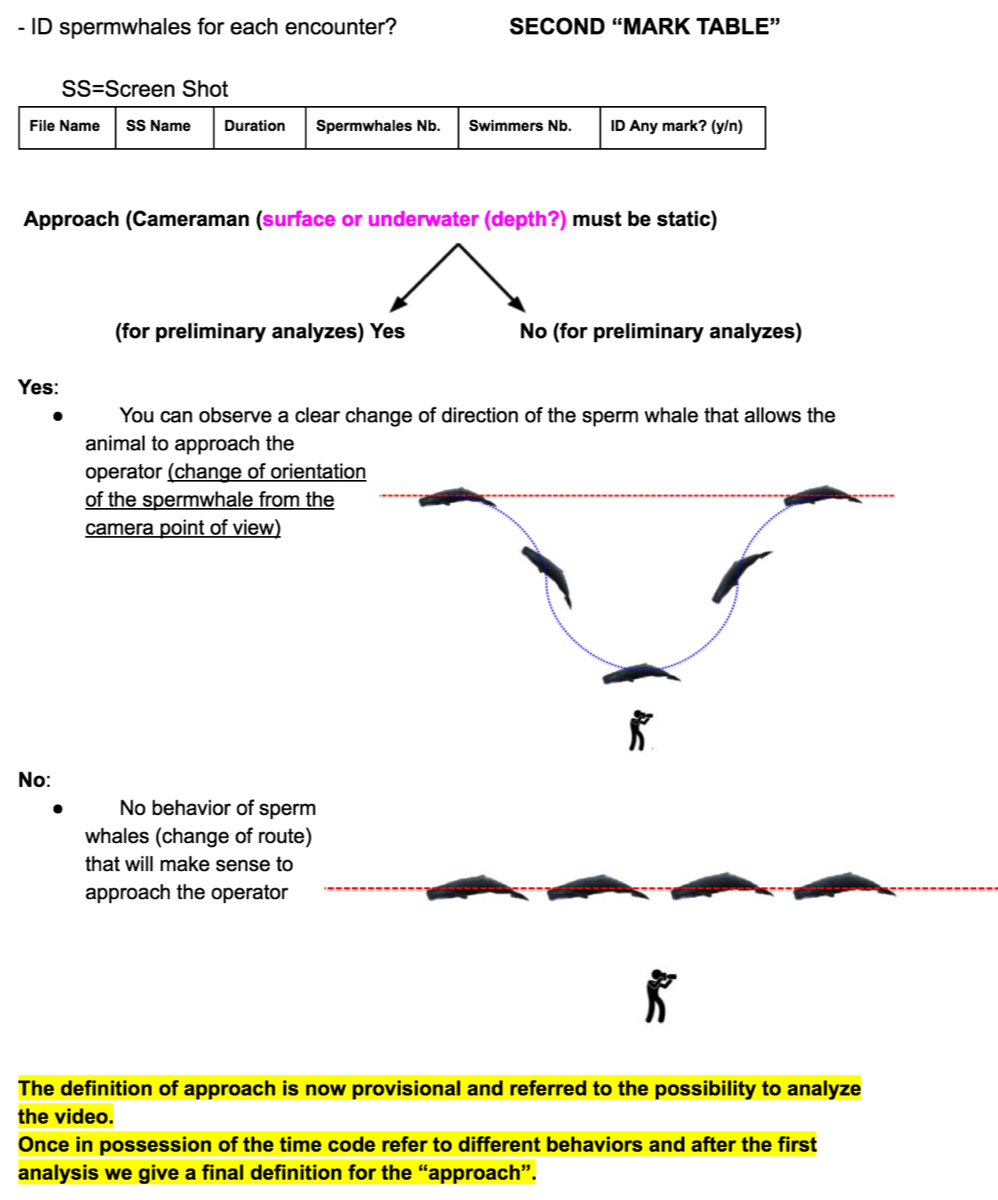
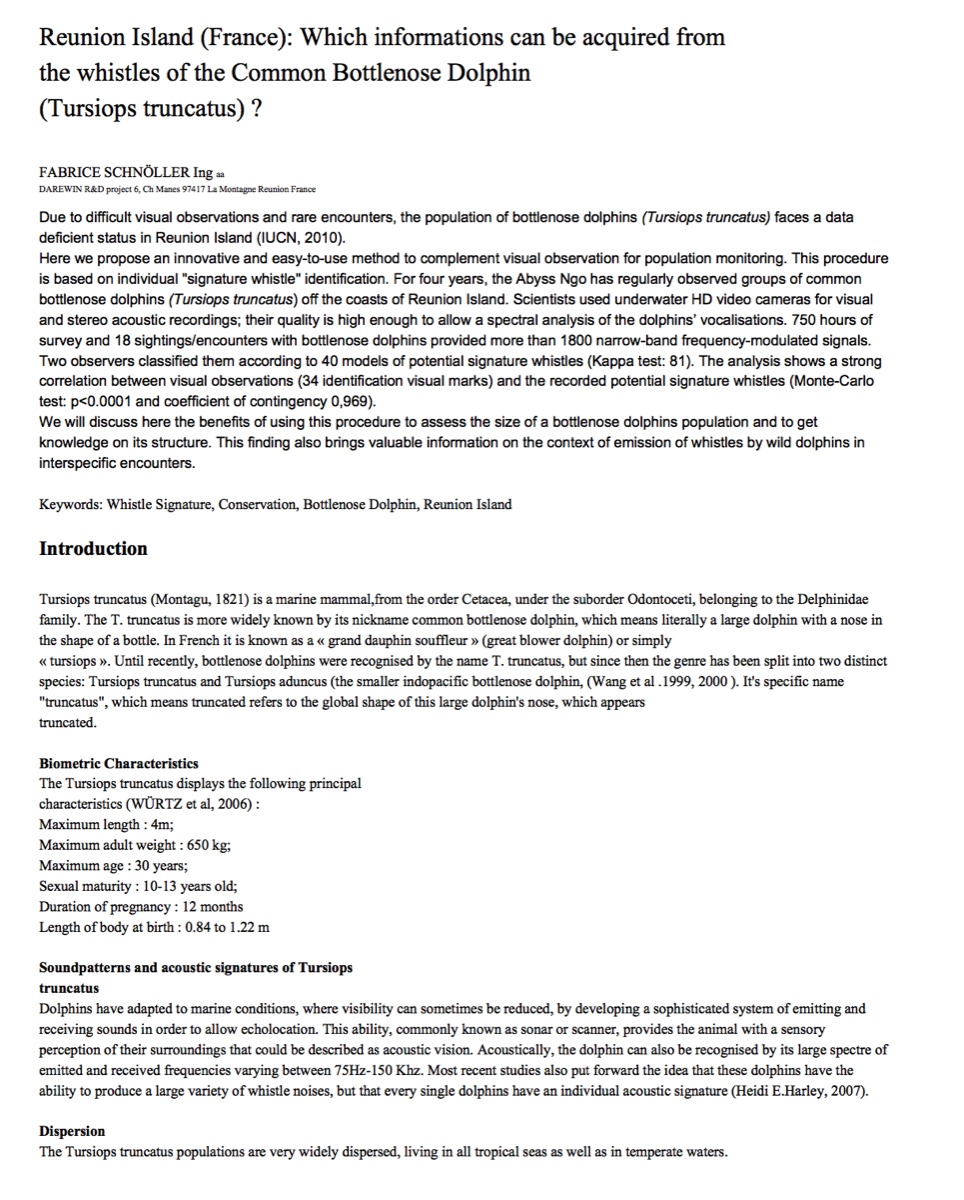
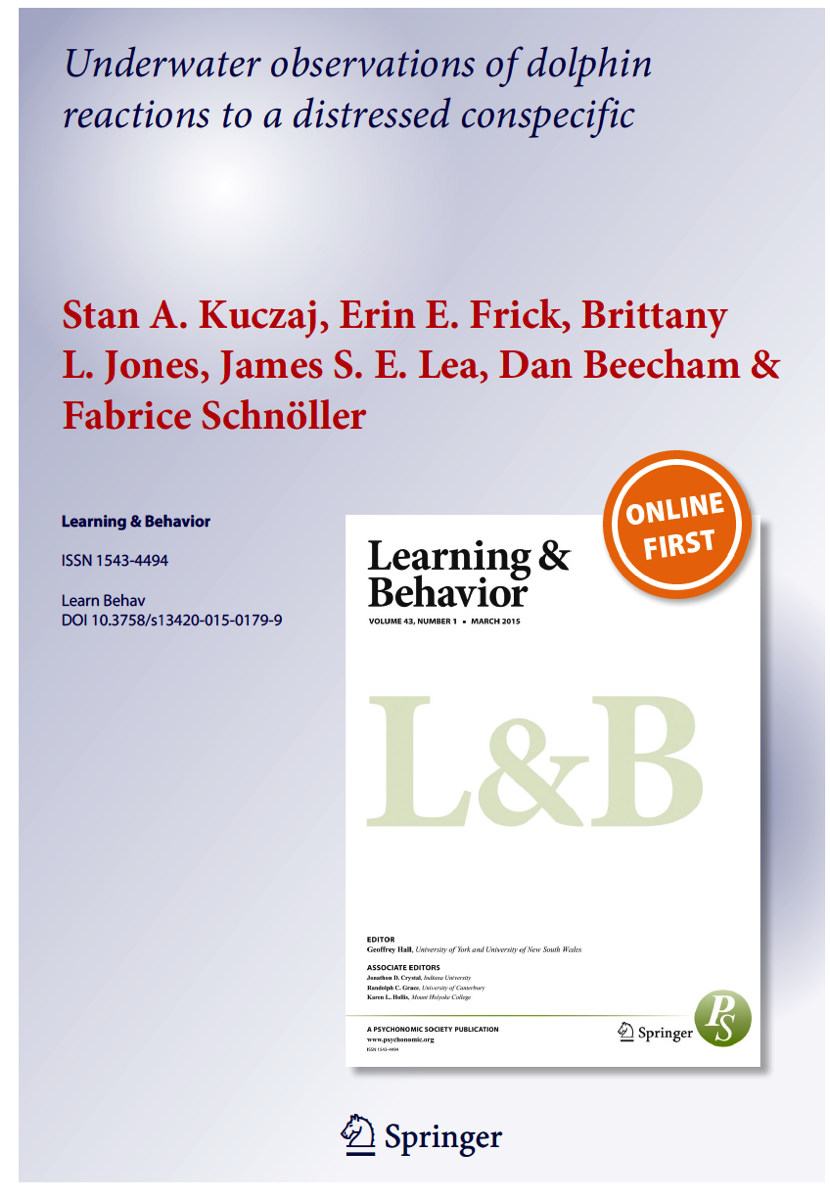
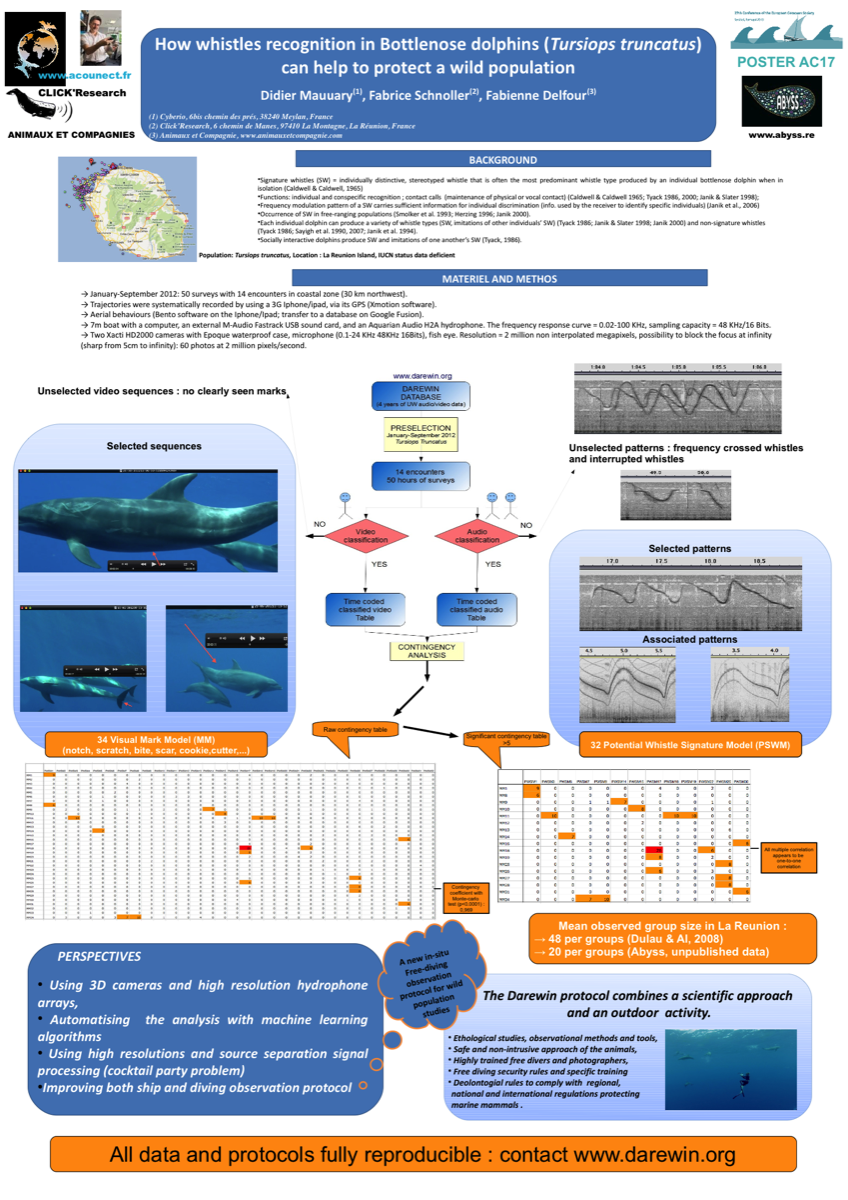
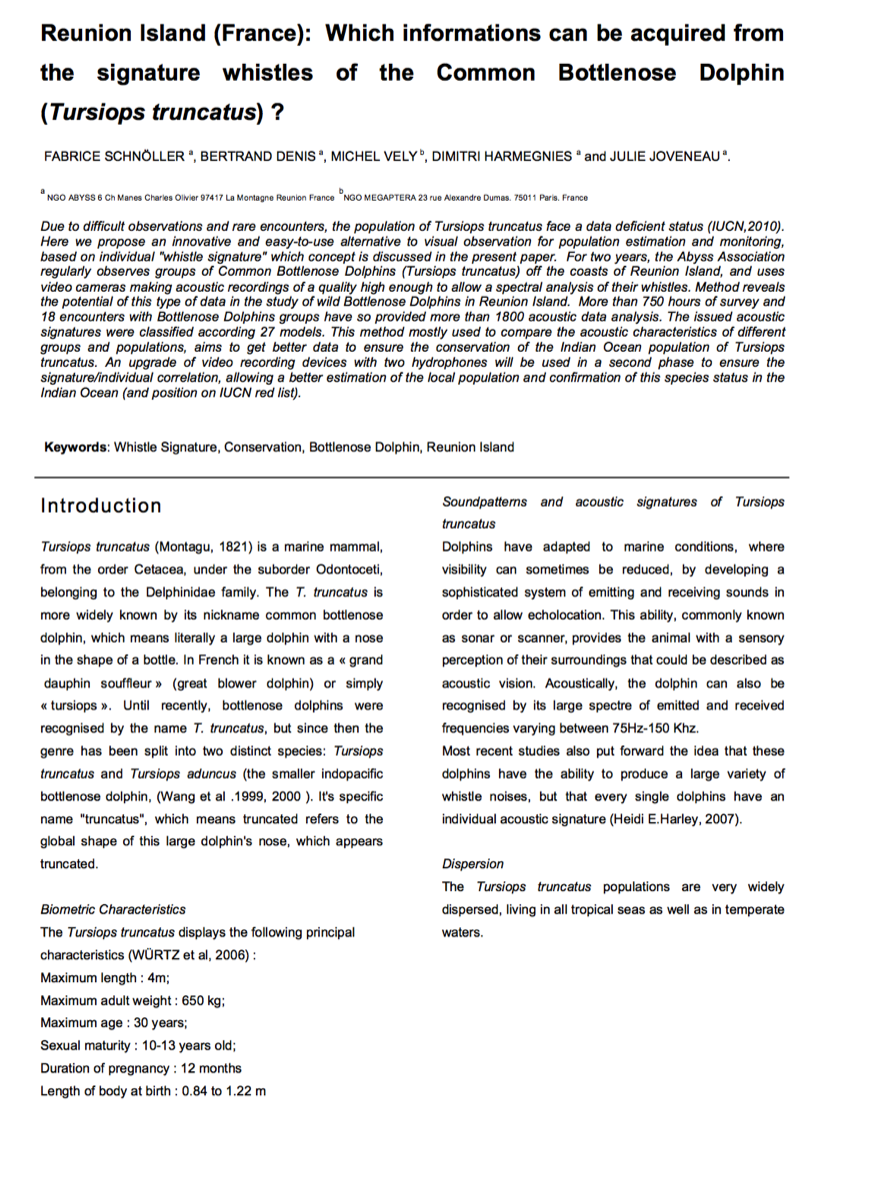
For decades, scientists have known that dolphins and whales are communicating with one another, probably in a very sophisticated “language”; we just don’t know what they are saying. Our team was founded with the hope of better understanding click communication in the near future. Join us [[embed link]]. If you are a researcher interested in collaborating with DAREWIN and receiving cetacean click audio and video data , please contact us. All our footage has multiple audio tracks that allows researchers to scientifically identify the emitters and study how they use their vocalizations.
SPERM WHALES: THE MOST INTELLIGENT ANIMALS ON EARTH?
Our mission may sound pretty far-fetched, we know. But rest assured, this is no New Age quest. DareWin’s methods are firmly rooted in science, and all published data will be peer-reviewed by experts in the field. There’s a reason why we have already dedicated years studying cetaceans and spent thousands of dollars of our own money, and why we hope to spends many more years continuing this research. Cetaceans could be the most intelligent lifeforms on the planet – even smarter than us. Consider the sperm whale, the granddaddy of oceanic animals: The sperm whale boasts a brain that weighs about 17 pounds, five times the size of ours; it's the largest brain ever to have know to have existed on Earth. The sperm whale's neocortex, which governs higher-level functions in humans such as conscious thought, future planning, and language, is estimated to be about six times larger than ours. Sperm whales also have spindle cells, the long and highly developed brain structures that neurologists have long associated with speech and feelings of compassion, love, suffering, and intuition — those things that make humans human. Sperm whales not only had spindle cells, but they had them in far greater concentration than humans. Furthermore, scientific evidence suggest that they evolved them more than 15 million years before us. In the realm of brain evolution, 15 million years is a very long time. Sperm whales can hold their breath for up to 90 minutes and dive to depths below 8,000 feet. They are the deepest diving animals in the world. Sperm whale vocalizations are loud enough to be heard several hundred miles away, and possibly around the globe. Sperm whales are the loudest animals on Earth.
Not only are sperm whale vocalizations extremely loud; they are also incredibly organized. They sound unremarkable to the human ear — something like the tack-tack-tack of a few dozen typewriters — but when slowed down and viewed as a sound wave on a spectrogram, each click reveals an incredibly complex collection of shorter clicks inside it. Inside those shorter clicks are even shorter clicks, and so on. The more closely we focus in on a click, the more detailed it becomes, unfolding like a Russian nesting doll. Sperm whales can replicate these clicks down to the exact millisecond and frequency, over and over again. They can also control the millisecond-long intervals inside the clicks and reorganize them into different structures, in the same way a composer might revise a scale of notes in a piano concerto. But sperm whales can make elaborate revisions to their click patterns then play them back in the space of a few thousands of a second. The only reason sperm whales would have such incredibly complex vocalizations, we – and many scientists -- believe, is because they are using them in some form of communication.
These animals are communicating, we just don’t know what they our saying. DAREWIN hopes to be the first to crack the code.
These animals are communicating, we just don’t know what they our saying. DAREWIN hopes to be the first to crack the code.